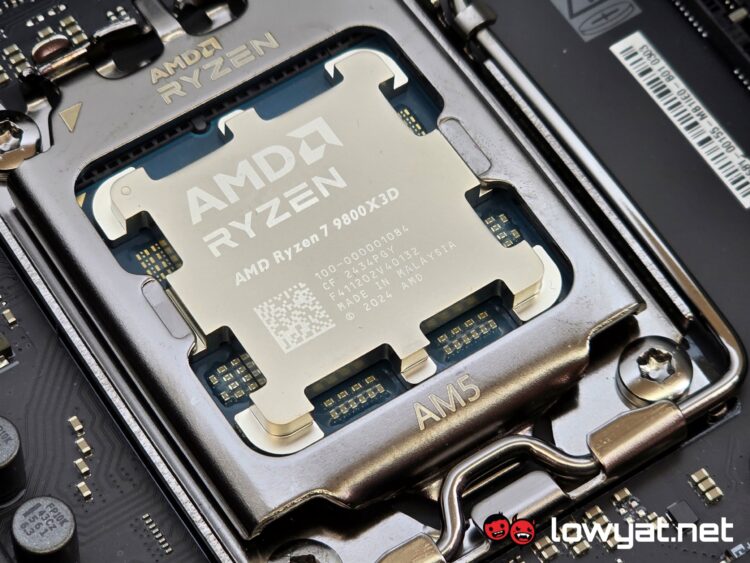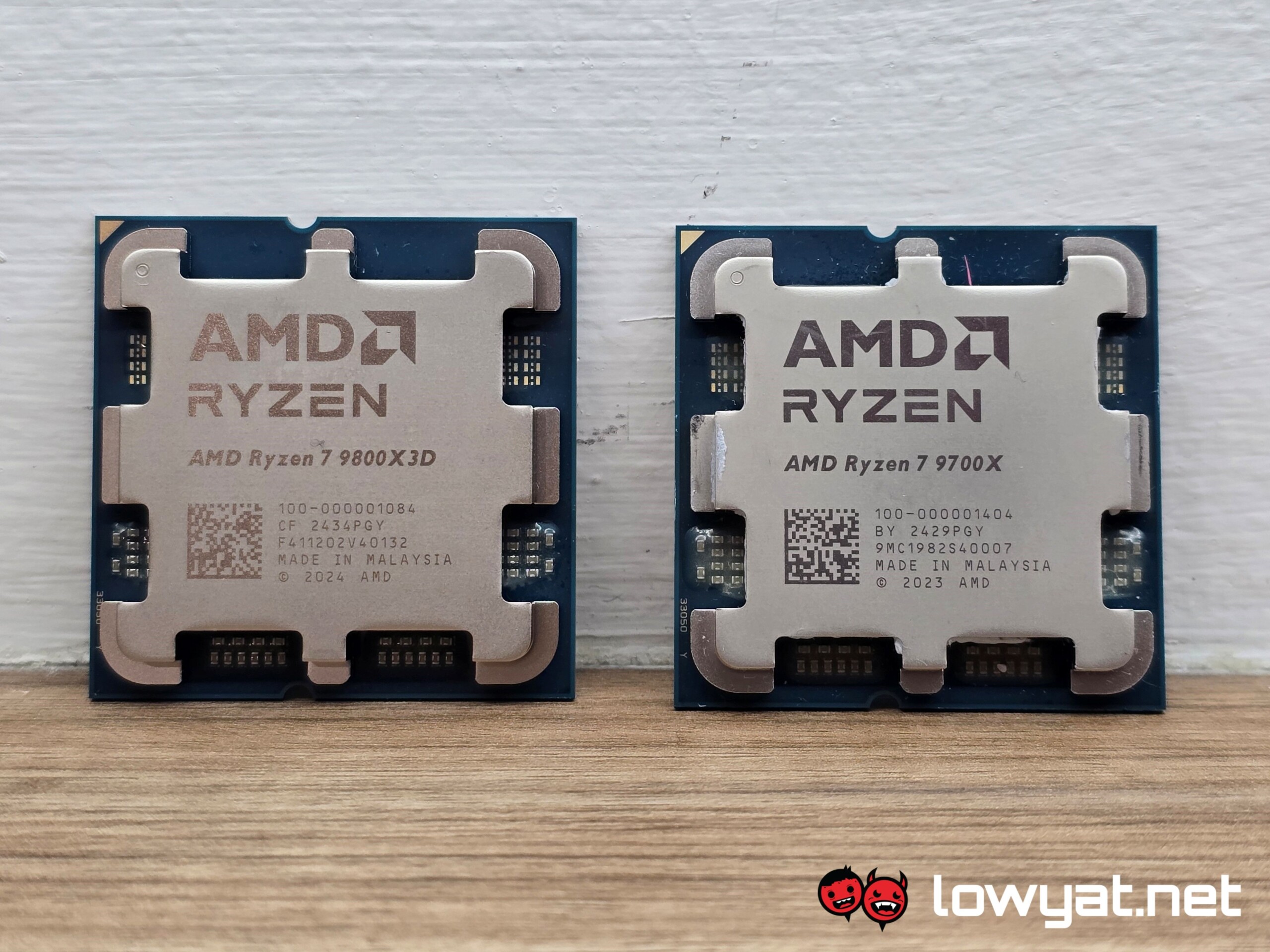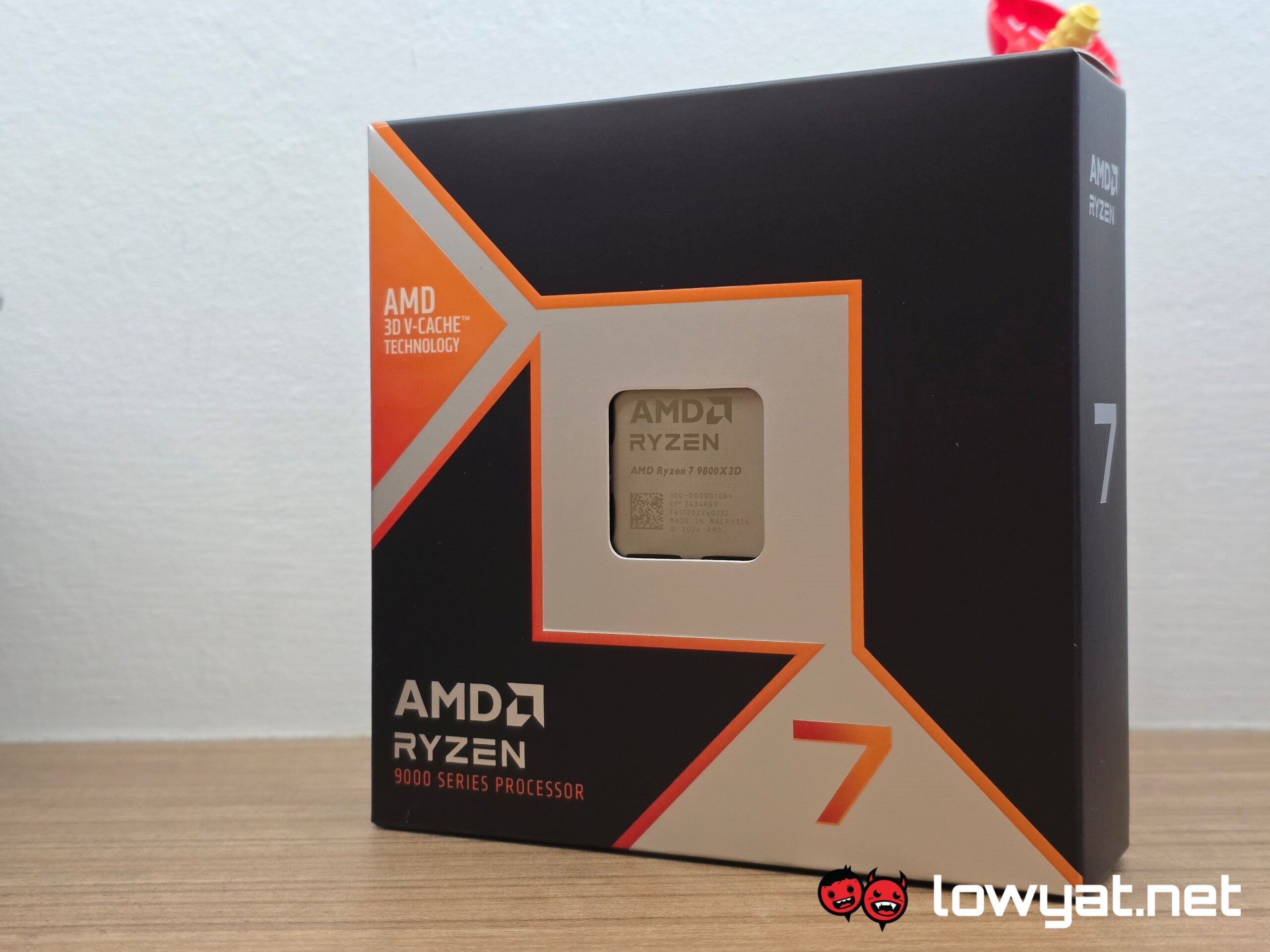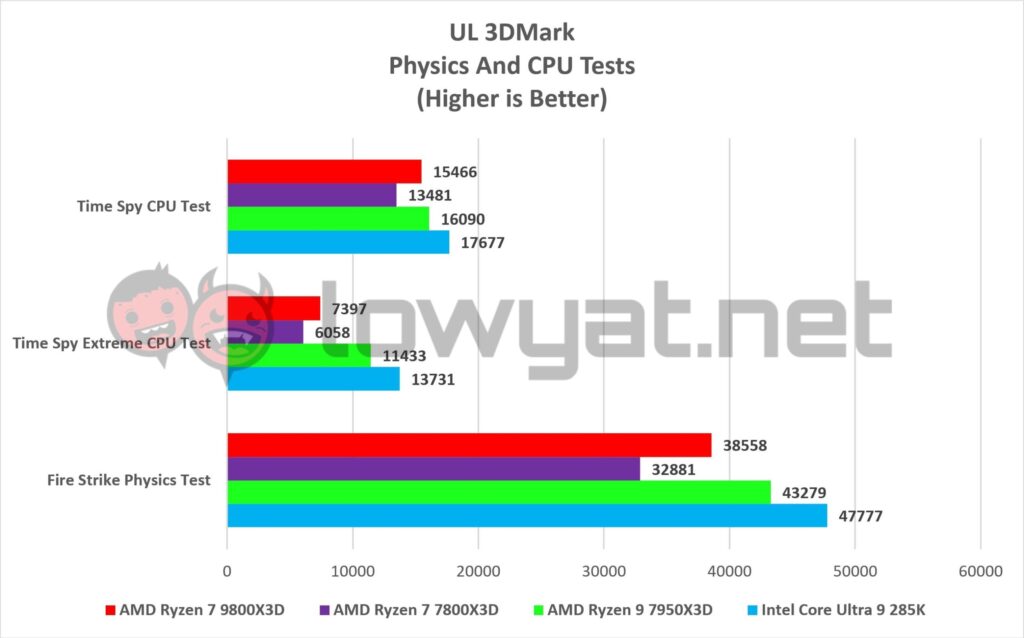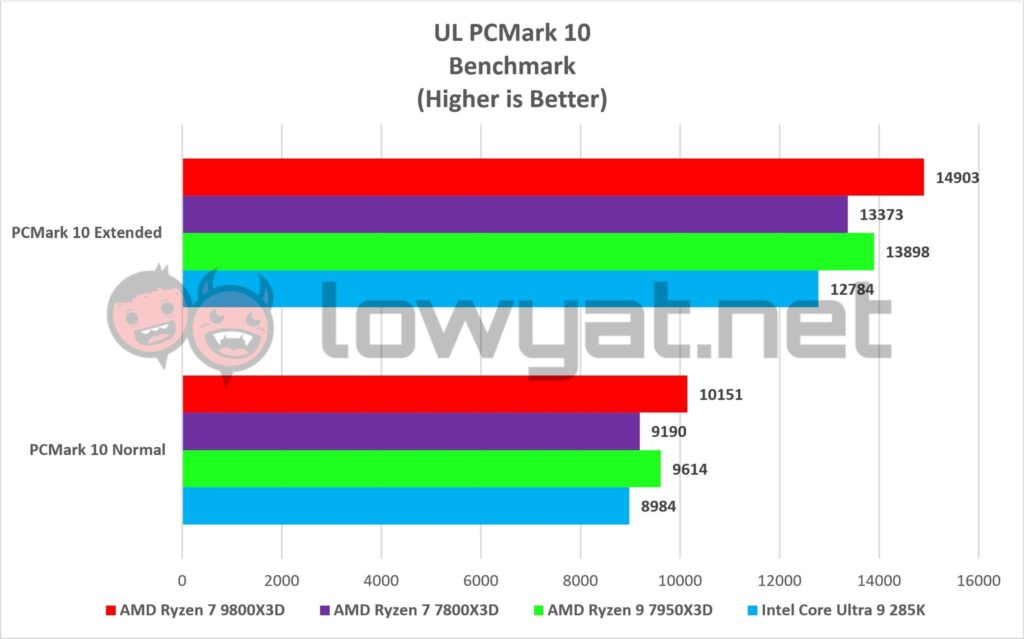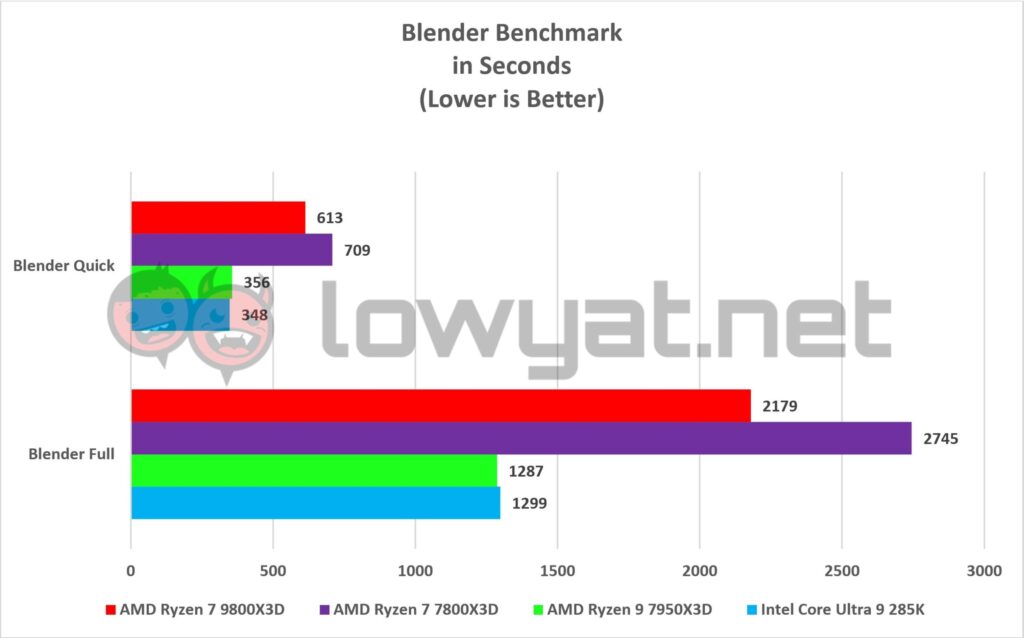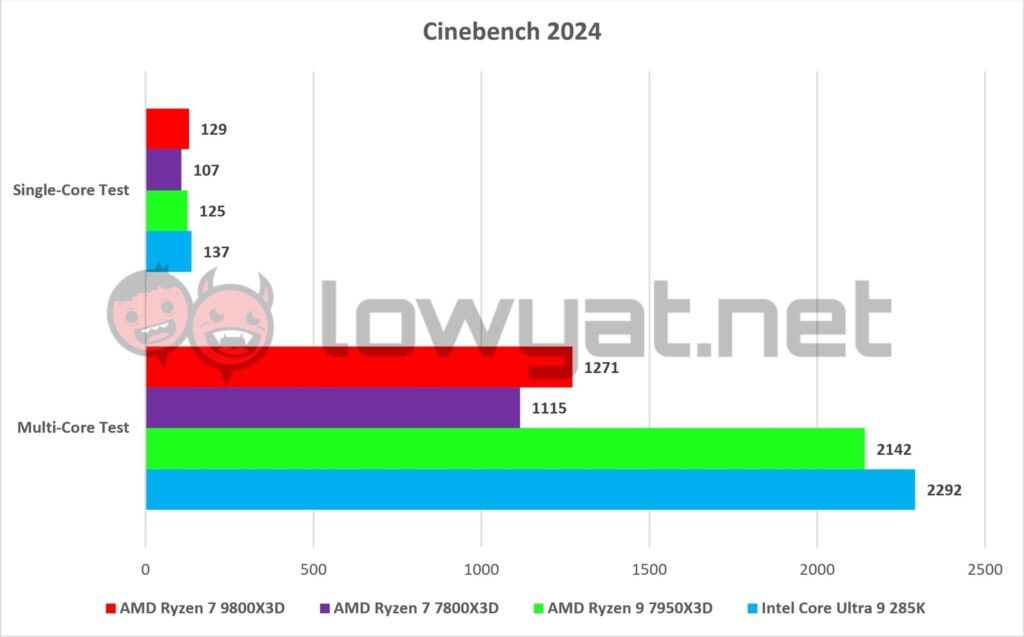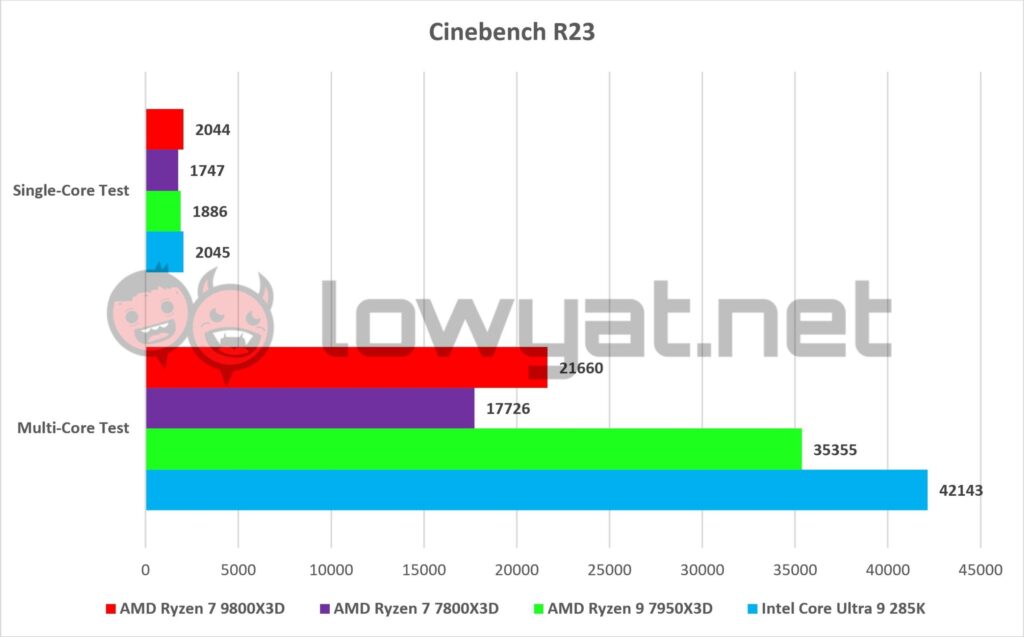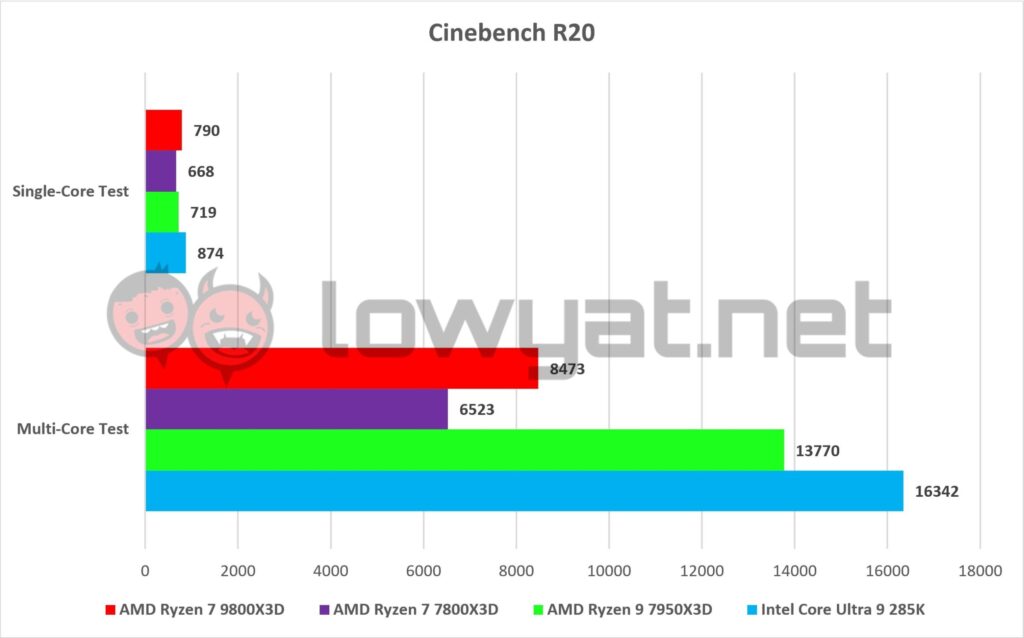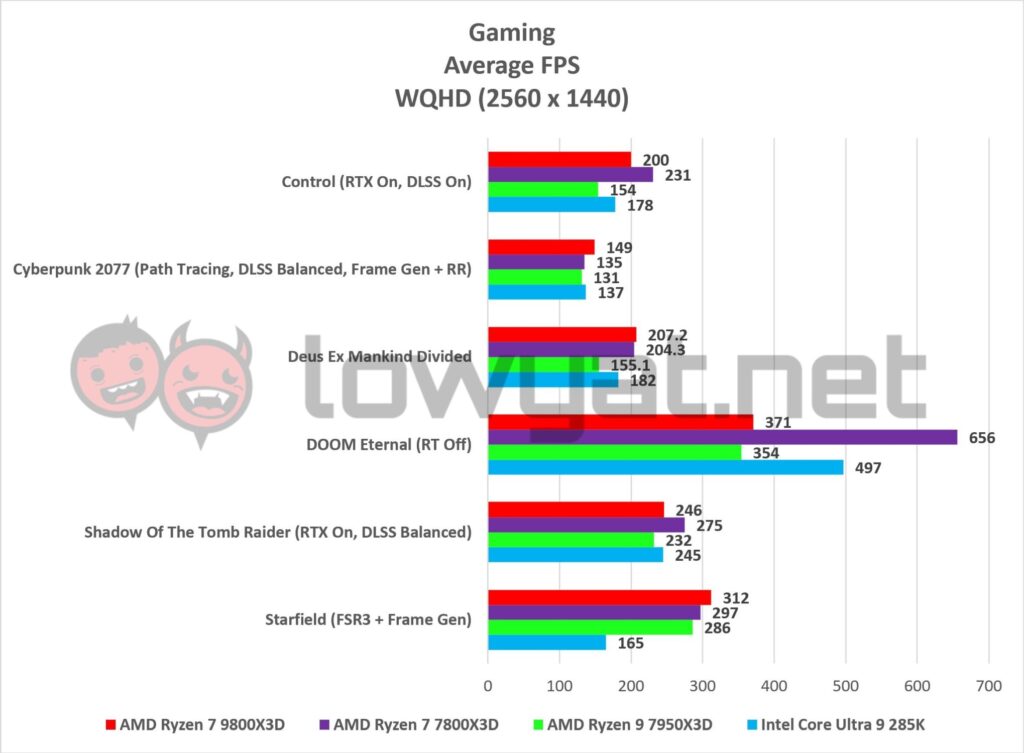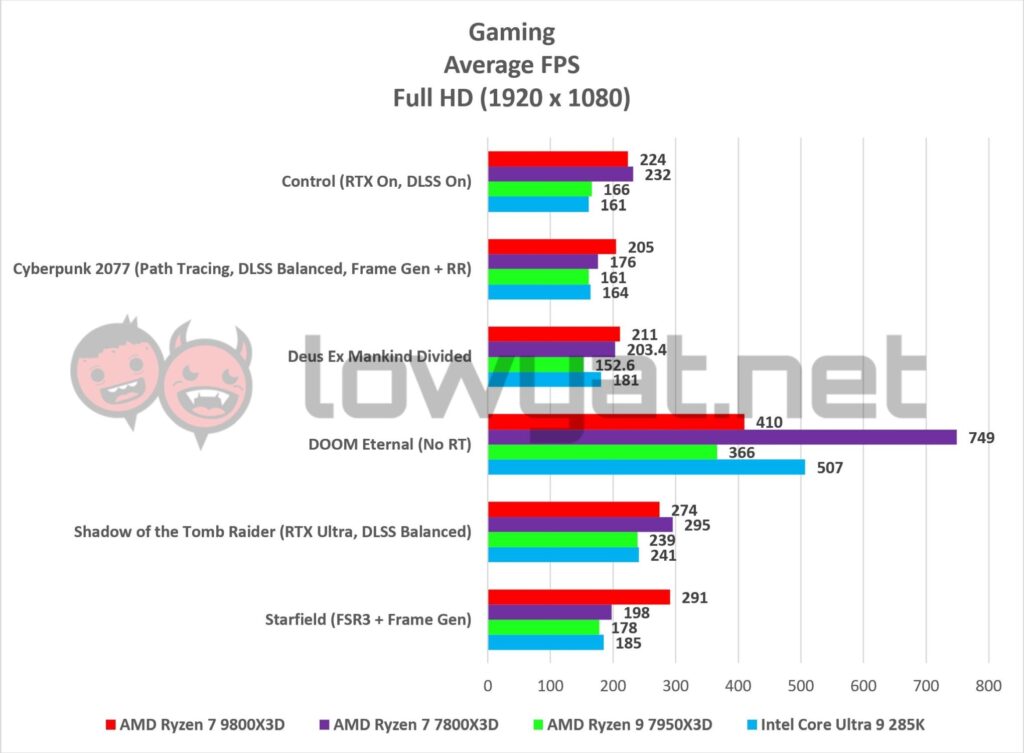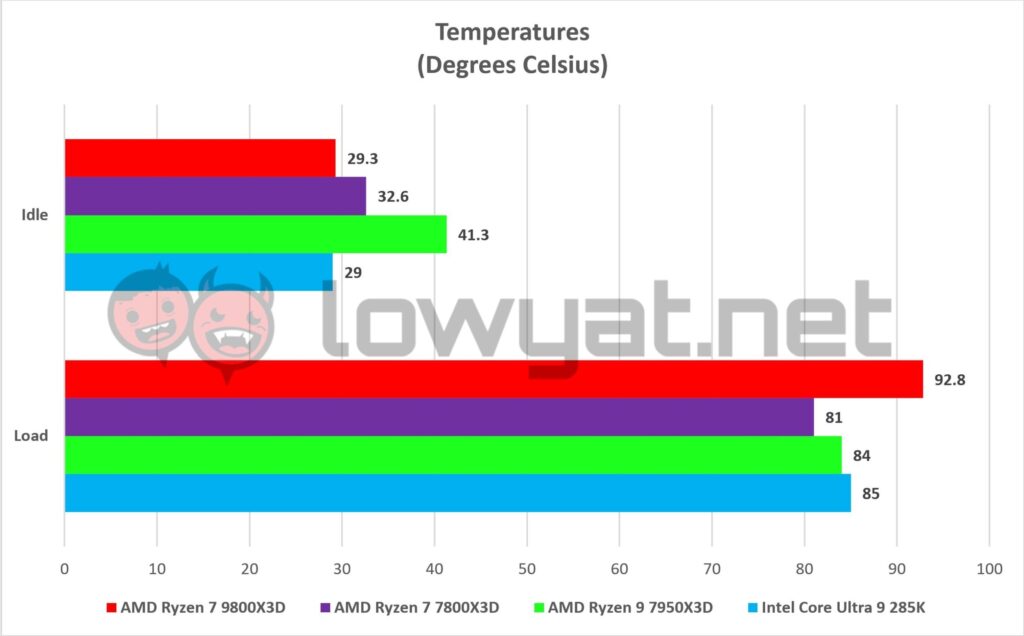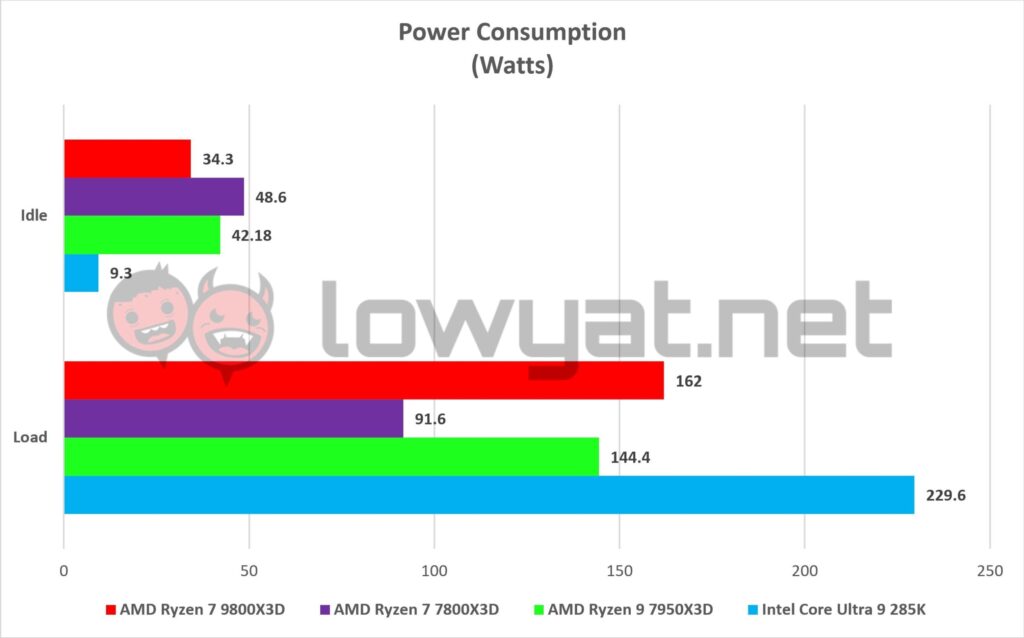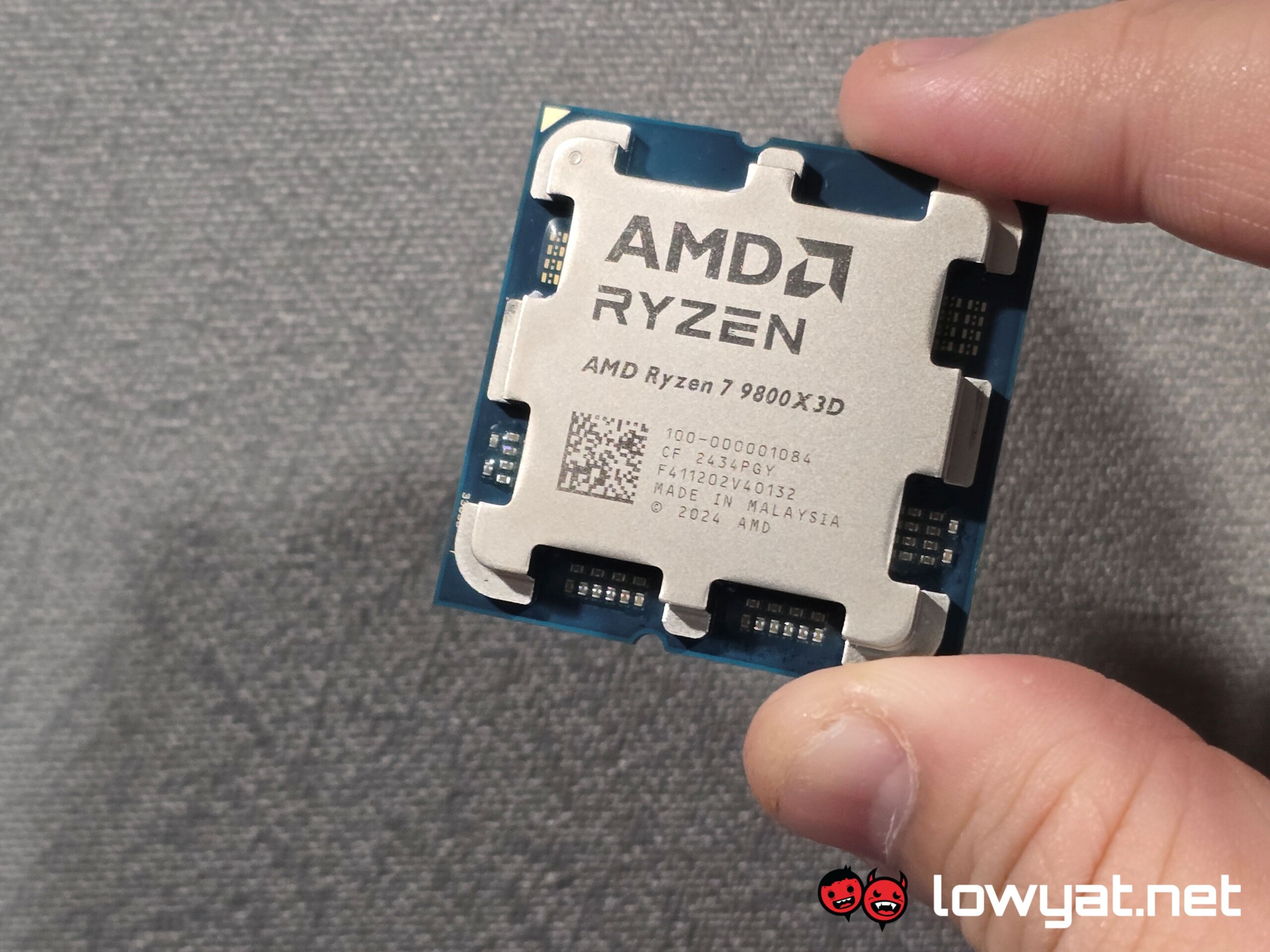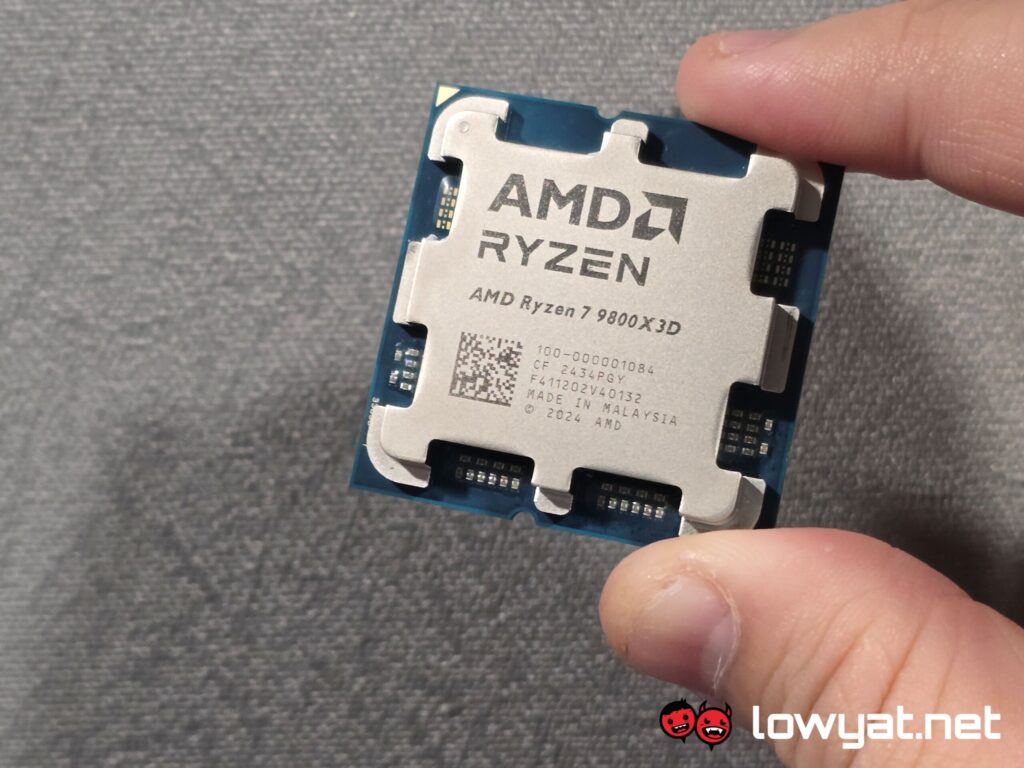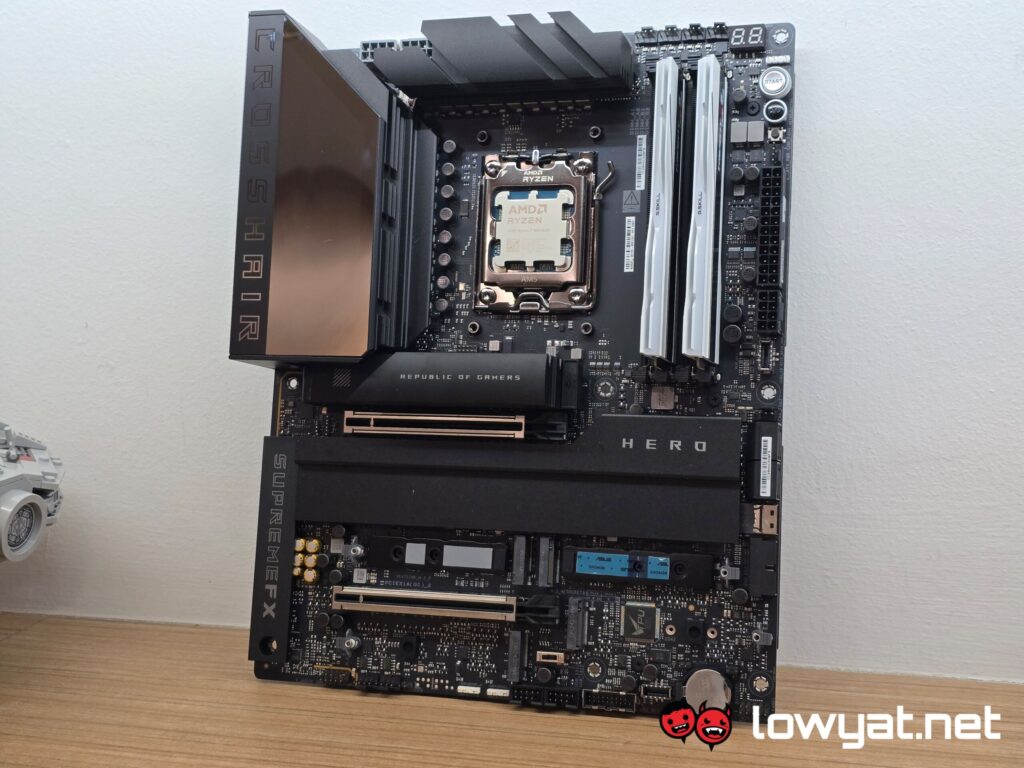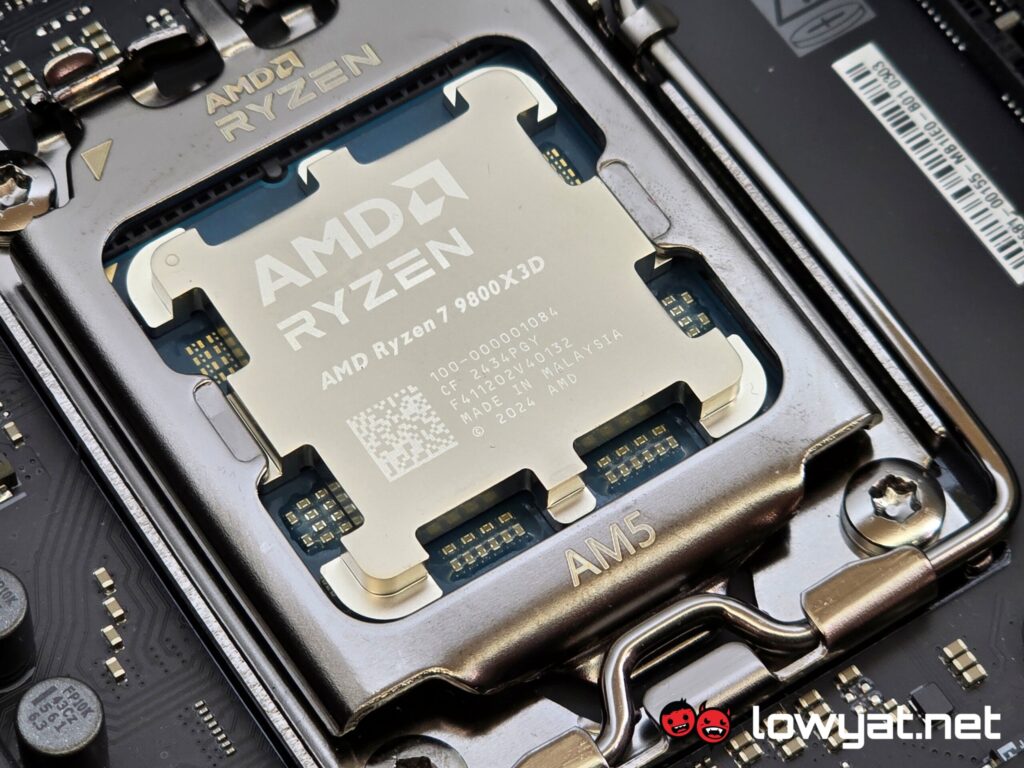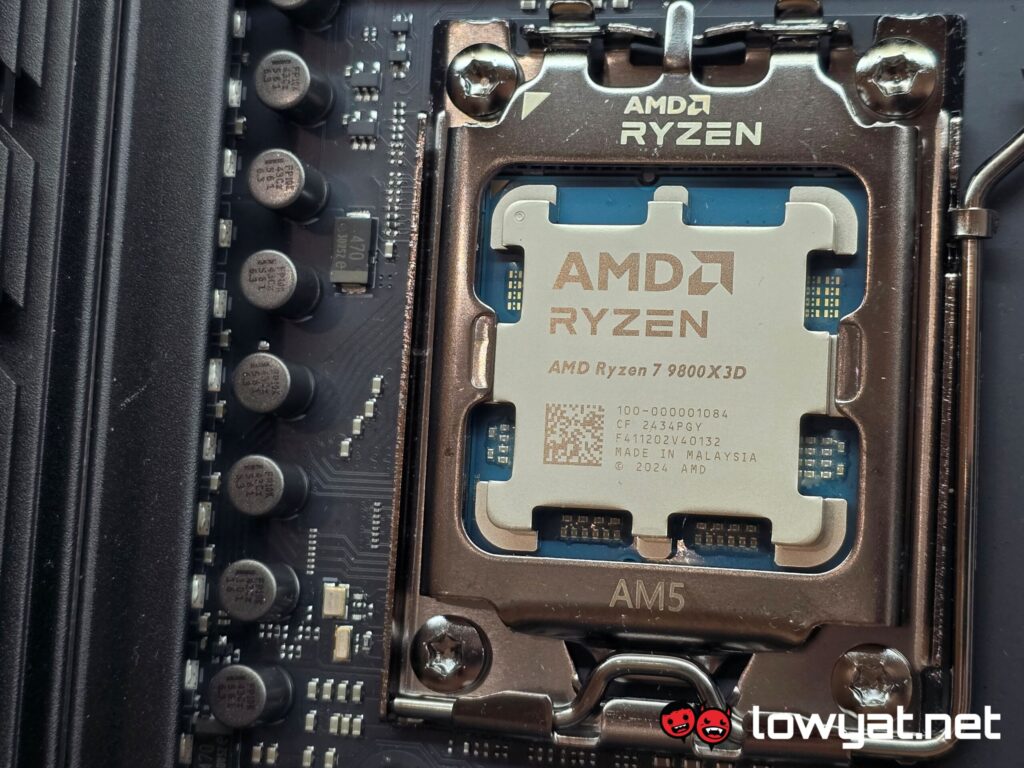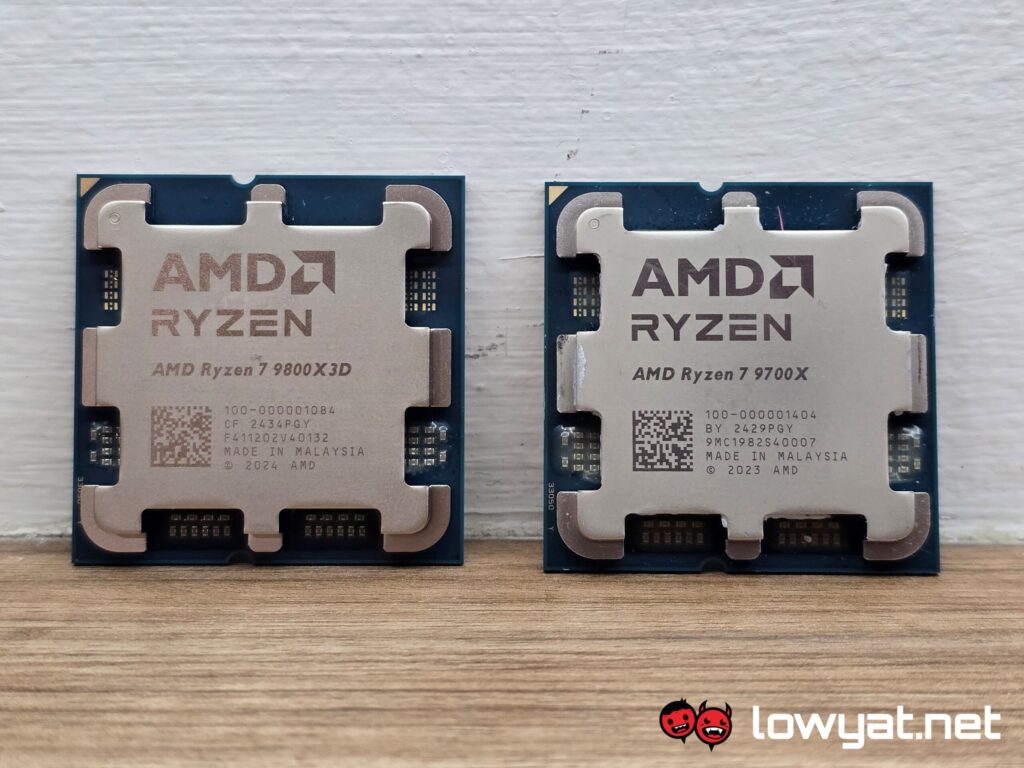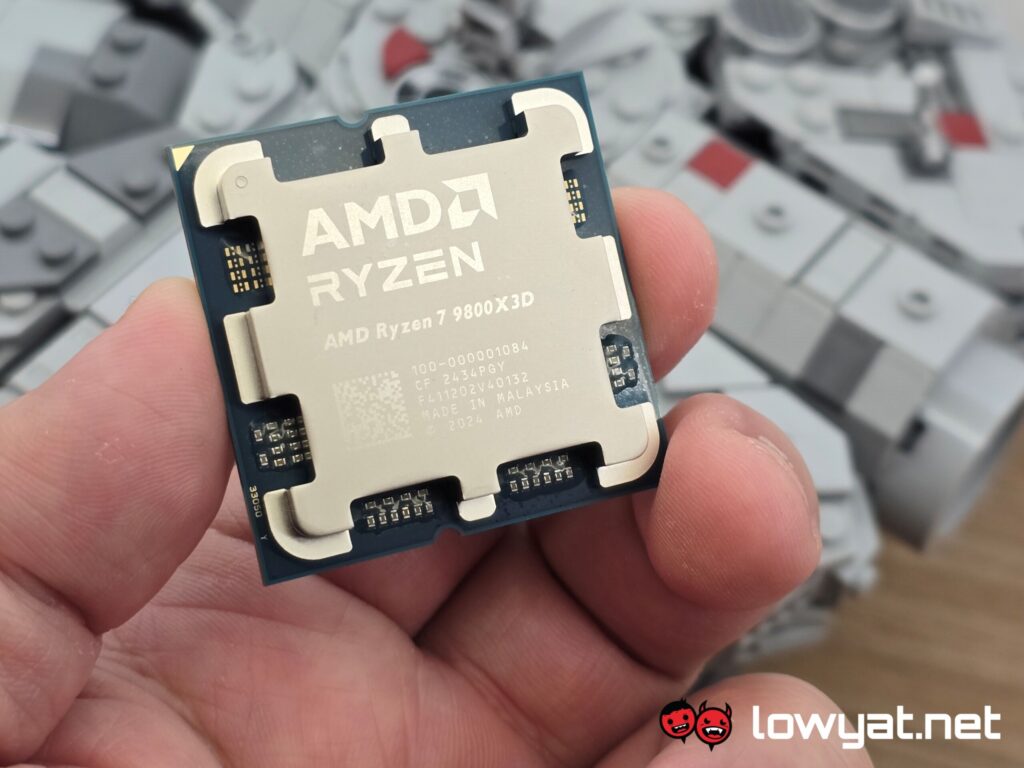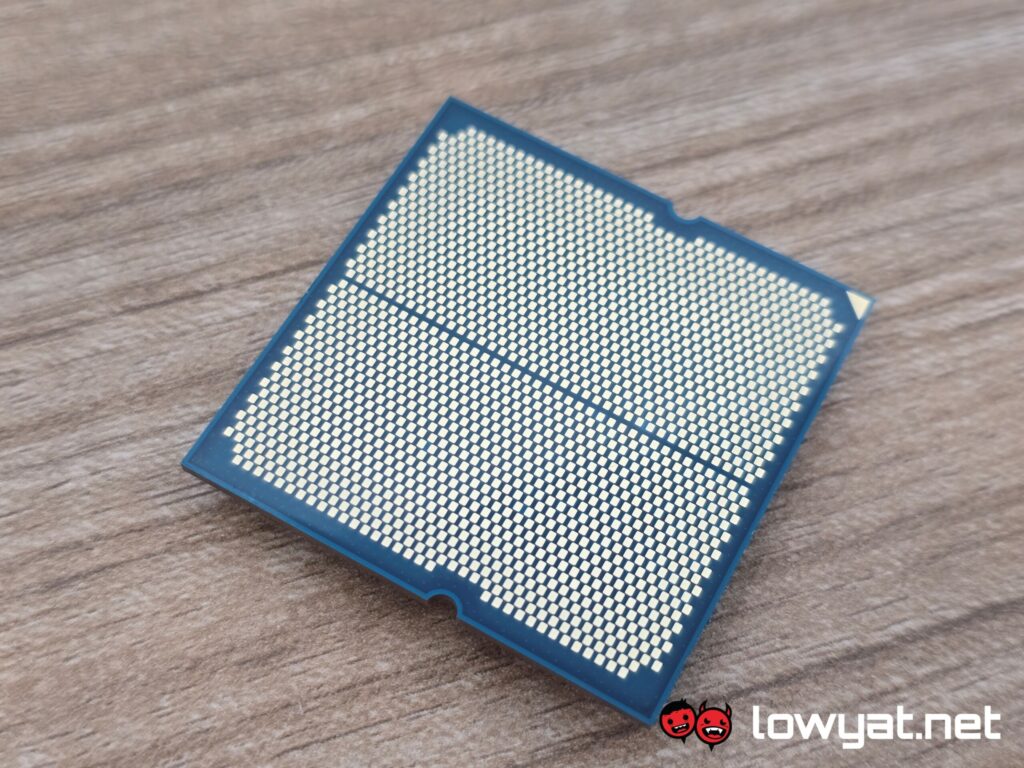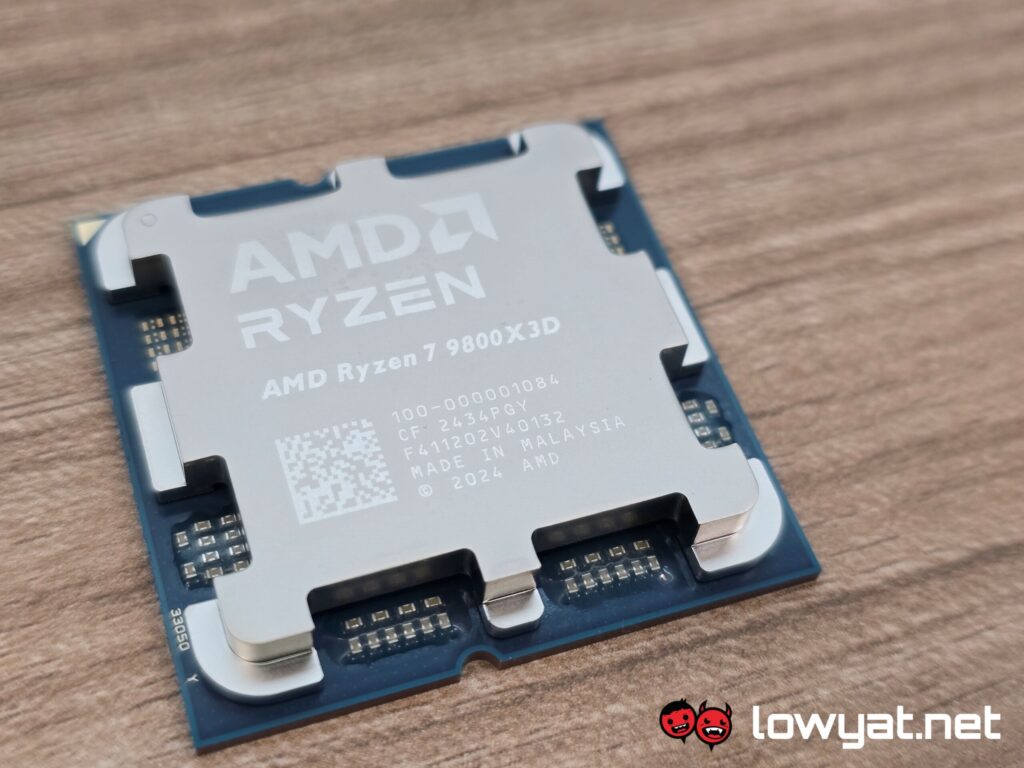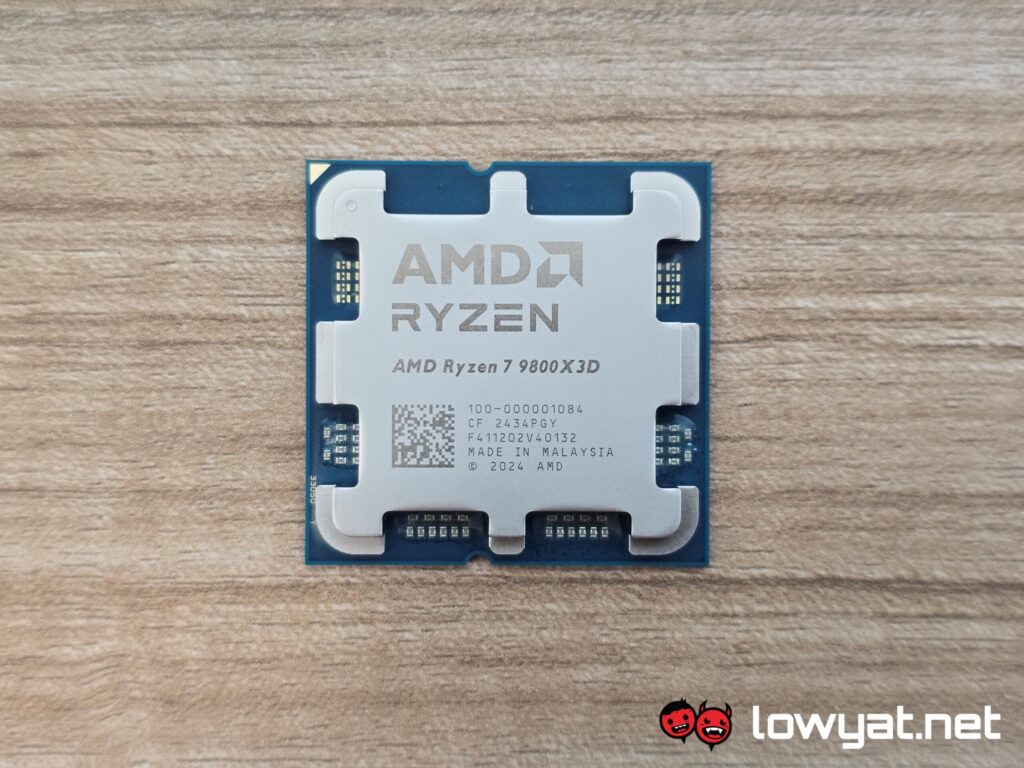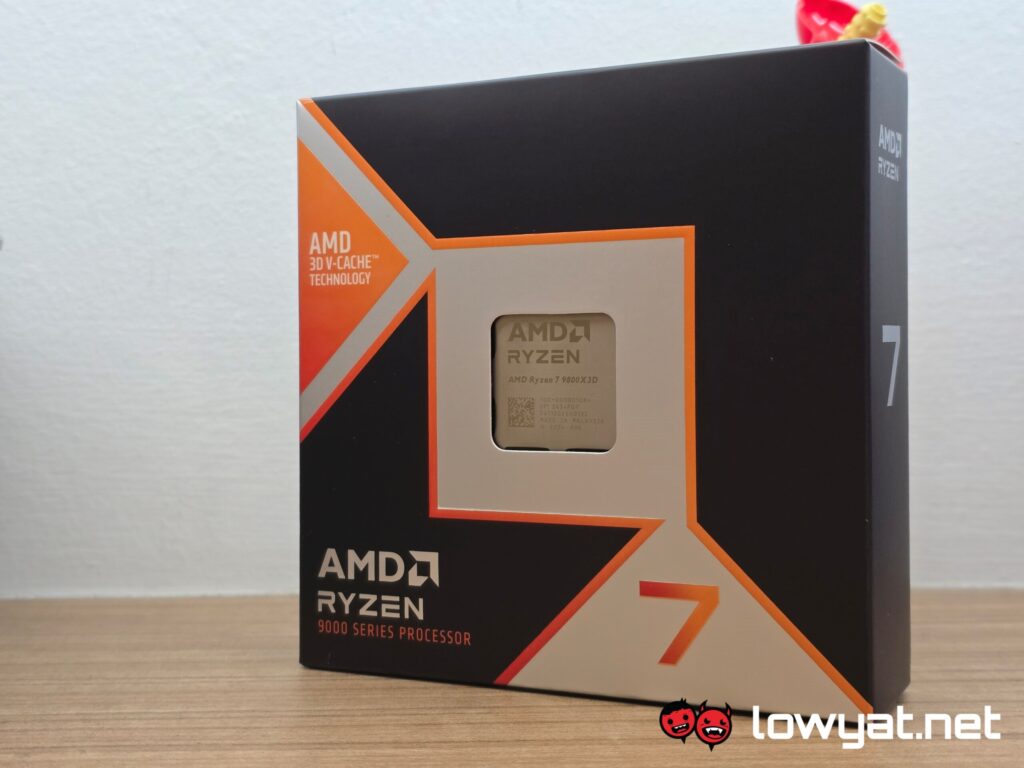As many of you probably know, AMD’s Ryzen 7 9800X3D CPU has landed. Like all it’s predecessors, it holds the promise of screaming fast gaming performance, along with other improvements on the chip.
And I’m not just talking about bumps in its base and boost clocks either. This CPU has been given an internal overhaul, so much so that it is genuinely a very different beast, both from its siblings and counterparts from the blue team.
Specifications And Design
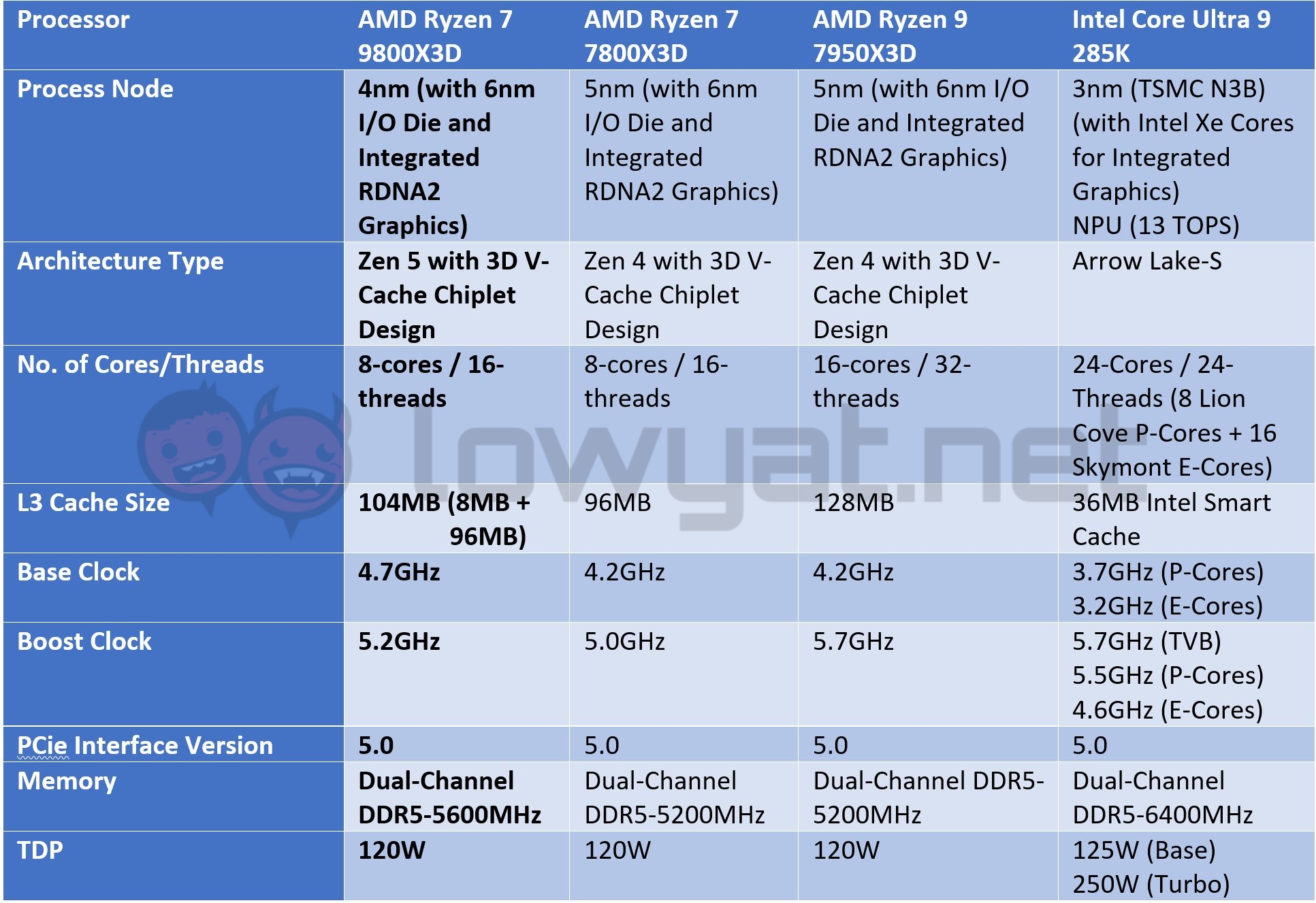 As I mentioned in the initial launch announcement, the 9800X3D, like its non-X3D counterparts, is made using the same Zen5 architecture, the main difference obviously being the inclusion of 3D V-Cache. More to the point, it’s using a second-generation 3D V-Cache that, as I’ll explain in a little bit, gives it an edge over the first.
As I mentioned in the initial launch announcement, the 9800X3D, like its non-X3D counterparts, is made using the same Zen5 architecture, the main difference obviously being the inclusion of 3D V-Cache. More to the point, it’s using a second-generation 3D V-Cache that, as I’ll explain in a little bit, gives it an edge over the first.
Another significant change, if you could even call it that, is the position of the 3D V-Cache on the die itself. This time, the chiplet has been repositioned to sit below the CCD. AMD says this change facilitates better and improved cooling for the CPU and the cores.
The party trick of the 9800X3D and its second generation 3D V-Cache, is that this processor can finally be overclocked. And I’m not talking about the song-and-dance routine you needed to go through with the 7000X3D’s memory EXPO and Precision Boost Overdrive 2 (PBO2) settings.
AMD’s engineering boffins have reworked the X3D technology that it can now be manually boosted and overclocked, just as you would with non-3XD SKUs. To answer this section very quickly: Yes, I managed to push all cores past the 5.2GHz mark, but only to 5.45GHz, and not without increasing the voltage, as well as having the fans on my AIO cooler running at full speed.
Also: no, I am not including any results from the 9800X3D being overclocked. As with all my processor reviews, I am merely providing results and performance metrics of the processor out of the box, and against a handful of competitors.
And with that…
Testbench
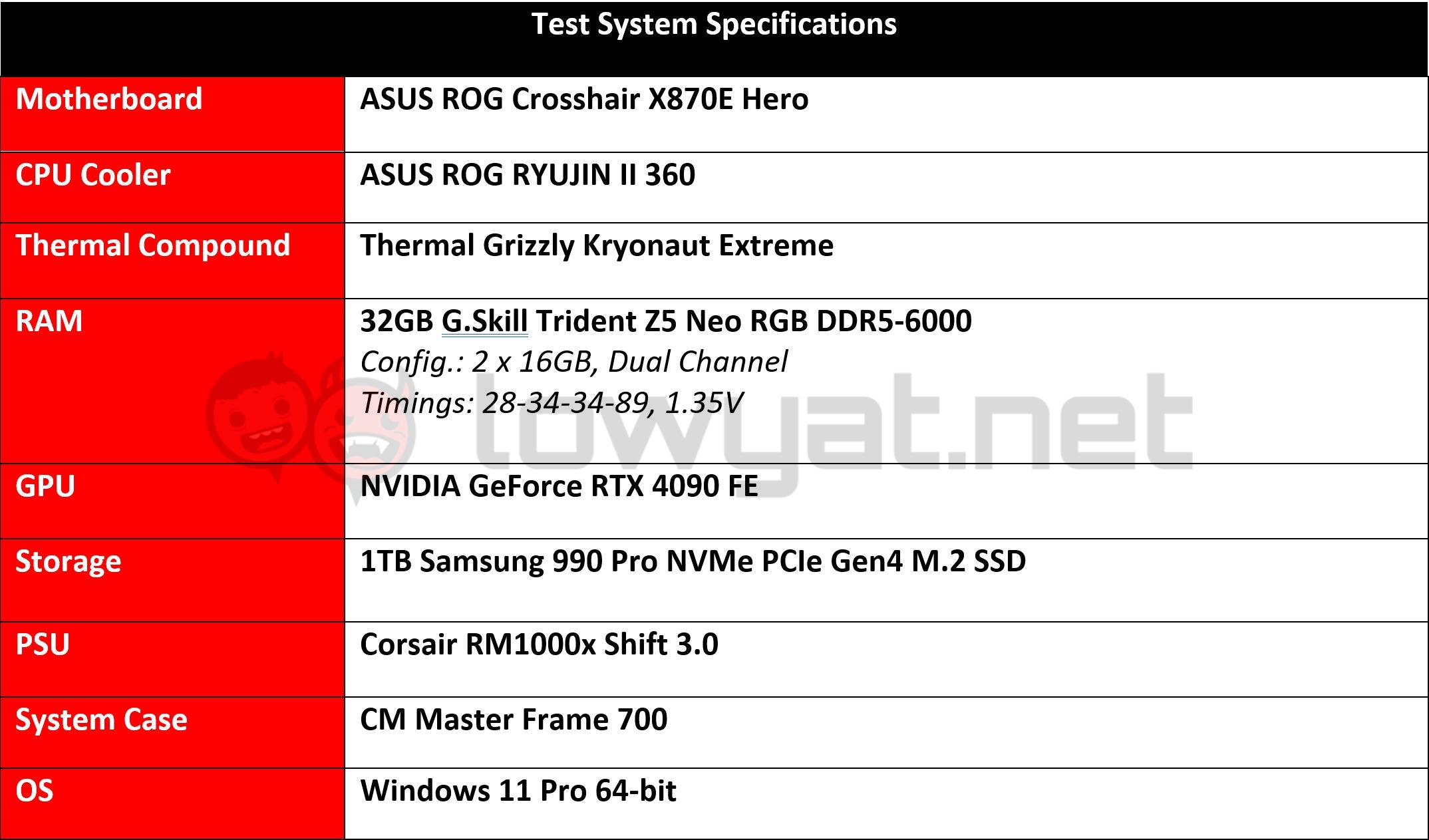 To test the 9800X3D, I am using an X870E motherboard provided by ASUS. It’s an updated version of the X670E motherboard in my testbed. Honestly, the updates with the new motherboard are basically Wi-Fi 7 support (finally). There’s also the tool-less installation M.2 slots on the board which, since its inception, is a real boon for me as it means fewer loose parts. Additionally, the primary PCIe slot for the GPU features a new easy installation and removal mechanism where you just slide the card towards the latch and lift it.
To test the 9800X3D, I am using an X870E motherboard provided by ASUS. It’s an updated version of the X670E motherboard in my testbed. Honestly, the updates with the new motherboard are basically Wi-Fi 7 support (finally). There’s also the tool-less installation M.2 slots on the board which, since its inception, is a real boon for me as it means fewer loose parts. Additionally, the primary PCIe slot for the GPU features a new easy installation and removal mechanism where you just slide the card towards the latch and lift it.
The CPUs I am comparing the 9800X3D with include the last-gen 7800X3D, the top-tier 7950X, and the more recent Core Ultra 9 285K from Team Blue. The latter is there primarily because, as it has seemingly been the case since the arrival of 3D V-Cache, AMD has implied that its latest 9000X3D processor yields greater gaming performance, directly or indirectly.
Benchmarks, Temperature, And Power Consumption
 As with all 3D V-Cache-equipped Ryzen CPUs, the 9800X3D doesn’t necessarily pull ahead of the other CPUs in all synthetic benchmarks, across the board. In particular, the performance difference between it and the 285K swings wildly between UL’s and Maxon’s benchmarks, respectively.
As with all 3D V-Cache-equipped Ryzen CPUs, the 9800X3D doesn’t necessarily pull ahead of the other CPUs in all synthetic benchmarks, across the board. In particular, the performance difference between it and the 285K swings wildly between UL’s and Maxon’s benchmarks, respectively.
Taking Blender as yet another example, the two 3D V-Cache CPUs very clearly have issues trying to complete the preset renders as efficiently as the non-X3D SKU and Intel’s current Arrow Lake-S powerhouse.
In all three Cinebench benchmarks, the 9800X3D can barely hold a candle up to the 285K and 7950X, although to be fair, it still shows a marked improvement over the 7800X3D.
But as I had mentioned earlier, gaming is always going to be the home ground of the 9800X3D. When pitted against the 285K, specifically, the CPU pulls ahead in almost all the control titles that I use to test CPUs, and that difference in performance ranges anywhere between 12 fps to more than 100 fps.
Surprisingly, Doom Eternal appears to be the only title where Team Blue’s top-tier CPU consistently outpaces the 9800X3D, but seems to lose steam with every other title. At the time of writing, the boffins at Intel have acknowledged that this shouldn’t be the case and that a fix with a performance bump is underway.
Interestingly enough but not as surprising is the trade-off in the 9800X3D’s thermal efficiency. At full load and in my cosy 20°C lab, the CPU actually came close to hitting the 93°C mark, making it hotter than even its predecessor which peaked at 81°C.
Its power draw is also relatively higher than the 7800X3D, which itself is surprising because AMD had made a rather large brouhaha to us about its Zen5 architecture being considerably more power efficient but this clearly isn’t the case. Sure, you could argue that it’s still more efficient than, again, the 285K, and that’s before you even consider opening it up by overclocking the living daylights out of it, courtesy of the second-generation 3D V-Cache.
Conclusion
The bottom line here is simple: since their advent, the X3D SKUs have been a dominating force in gaming for desktop PCs. The 9800X3D and its performance are therefore unsurprising and what I’ve come to expect to some measurable degree when it comes to pushing framerates. Of course, other non-X3D Ryzen variants, both lower and higher tiers, would serve as better options for productivity-based tasks but honestly, it will still get the job done.
Once again, when compared to the Intel Core Ultra 9 285K, the 9800X3D looks a little lacking in certain departments, at least on paper. However, with an out-of-the-box boost clock of 5.2GHz, a lower TDP, and more importantly, being RM400 cheaper, it’s the more exciting option for the end of the year, more so for those among you planning on building a new high-end gaming rig.
Photography by John Law.
Follow us on Instagram, Facebook, Twitter or Telegram for more updates and breaking news.


